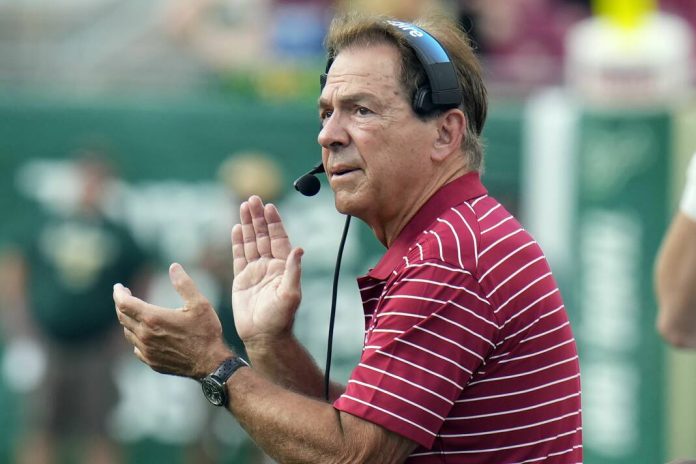Who knew that being compensated fairly for your labor was so controversial?
Last week, a column ran in these pages titled “College athlete payoffs a world gone wild.” The writer lamented a study indicating that the average football starter at a Power Five conference school will make an estimated $103,000 this season in Name, Image and Likeness (NIL) money.
Though some star athletes have endorsement deals, most of that money comes to the athletes through alumni-run collectives that pool donations and agree to compensate athlete for community work or other such trade-offs. Schools aren’t allowed to pay athletes directly.
Perhaps they should, given how much money the athletes are generating for them.
The Big Ten has television deals with Fox, CBS, NBC and its own in-house network that will pay each member school an annual average of nearly $72 million through the 2029-30 school year — just for football alone. The SEC has a similar TV contract lined up through 2033-34.
Not surprisingly, the football and basketball coaches at those power schools are very well compensated. The University of Alabama pays Nick Saban $11.4 million per year — a reasonable amount, one might argue, for someone who has coached the Crimson Tide to six national championships. The players that actually won him those titles, though, got nothing — at least directly from the school.
Imagine showing up to work every day, making tens of millions of dollars for your employer and not receiving a cut.
And yes, being a Division I college athlete is a full-time job. The demands on their time — the travel, practices, film sessions — are massive, especially when they’re also being expected to manage a full course load to maintain academic eligibility.
But they’re getting scholarships, one might argue. With the rising cost of college tuition, that’s probably worth between $200,000 and $300,000 over the course of four years. As someone who’s likely going to have to pay full freight to put two kids through college sooner than I’d prefer, that sounds appetizing. It’s certainly not nothing.
Here’s the thing, though: America is supposed to be a free-market capitalist system, where desirable employees can negotiate and receive fair market value for their services. A 20-year-old who designed a video game could sell it to the highest bidder, with no restrictions. Ditto for any college-age entrepreneur or prodigy with a marketable skill.
Except, of course, for collegiate athletes. They were able to take visits and get courted by employers — err, schools — but until these last two years, compensation was capped at the five-figure annual value of their scholarship.
Tennessee men’s basketball coach Rick Barnes has pulled in bonuses totaling $1.8 million over the past two seasons despite failing to make it past the Sweet 16 in either year and getting knocked out by a lower seed both times.
His players are finally able to cut deals and get endorsers or boosters to pay them a little extra — and yes, in relation to what Power Five coaches make, “little” is the right word — and we’re suddenly clutching pearls?
“One must wonder if academics are even mentioned during 90% of recruiting visits anymore,” the columnist wrote. Umm, were they ever? Perennial football powers such as Georgia and Ohio State are graduating fewer than two-thirds of their players; men’s basketball rates at many of the top schools have long been laughable.
Coaches have long sold star recruits on “we’ll get you to the pros,” not “wait until you see our chem labs.” Those coaches, and the well-paid athletic directors and university presidents who sign their checks, have all been fine with using and discarding those recruits — not caring whether they graduated, so long as they won games and made money for good ol’ State U. Once your eligibility is up, you’re not our problem anymore. Good luck, kid.
Saban is a great coach, to be sure, but if he didn’t have NFL-level talent on his roster he wouldn’t be making more than most NFL players do. Every millionaire coach and AD made their millions on the backs of the athletes.
Are any of us tuning in to see what color windbreaker the coach is wearing? It’s always been about the players. Always.
College sports aren’t “a world gone wild” now that they can get paid. The only wild part is that it took so long.
Ryan O’Leary is the sports editor for the Daily Journal. He can be reached at [email protected].





